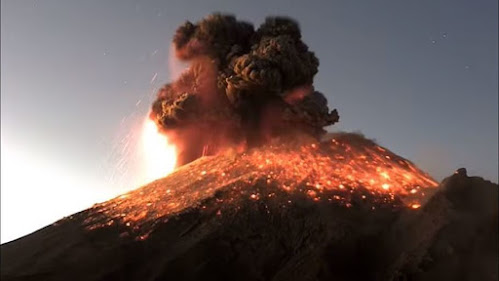MOUNT ETNA ERUPTS
- There were many records of attempting to save the city from erupting and some attempts were successful and some were not. Many residents risk their lives by ettempting to save the city and their livelihoods. At the time, the city of Catania had about 20,000 residents; most failed to flee the city immediately. Instead, Diego de Pappalardo, a resident of the city, led a team of 50 men to Mount Etna, where they attempted to divert the lava flow. Wearing cowhides soaked in water, the men bravely approached the lava with long iron rods, picks and shovels. They were able to hack open a hole in the hardened lava wall that had developed on the outside of the lava flow and much of the flow began to flow west out of the new hole. However, the residents of Paterno, a city lying southwest of Etna were monitoring these developments and quickly realized that this new flow direction could imperil their own city. They literally fought back the Catanians, while the lava breach hardened and filled again. Catania was not the only city affected—the eruption wiped out 14 towns and villages and left about 27,000 people homeless. Following this disaster, it was decreed that interference with the natural flow of lava was prohibited in Italy, a regulation that remained in effect hundreds of years later.







No comments:
Post a Comment